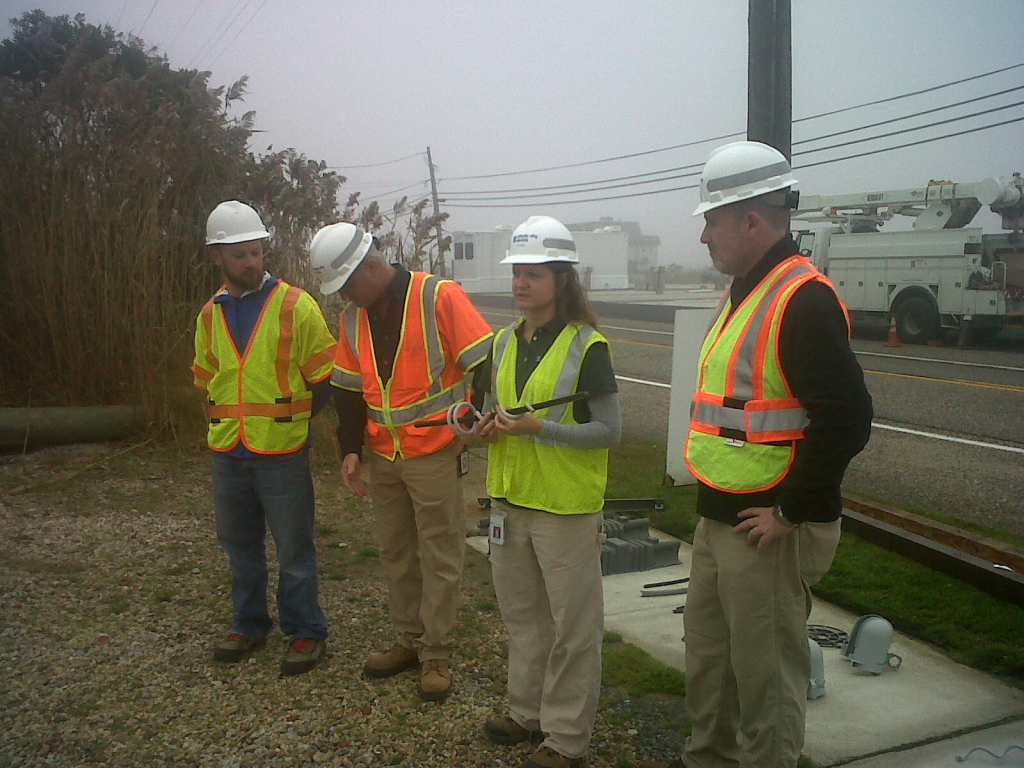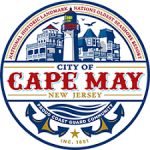STRATHMERE – On a foggy morning Nov. 12, Atlantic City Electric (ACE) put one of its lesser known programs on display. Showcasing a variety of equipment designed to thwart birds from harming themselves and disrupting electrical service, ACE described its Avian Protection Program.
That program is part of a larger integrated effort by the utility to protect the environment while delivering its service. On this day, the avian program was front and center because in Cape May County the rich diversity of bird life and the location as a center for migratory species makes the job a challenge.
Edward Kaminski, ACE senior supervising engineer, pointed out the hundreds of thousands of birds “that move through this area” most of which are species protected by state or federal laws. These birds can represent a danger to ACE equipment and service. Avian travelers can also place themselves and their potential offspring in grave danger.
Kaminski noted that raptors (birds of prey) and other migratory species routinely use power line poles and towers as perches for hunting, resting spots, and even nesting locations. Birds may also collide with power lines as they migrate between habitats. The avian program and the people who are part of it see their jobs as more than preventing service disruptions. They work with conservation groups in an effort to prevent the birds from harming themselves.
The osprey, a raptor that has almost become a symbol of avian life in the county, is of particular importance to Ben Wurst, a program manager with the Conserve Wildlife Foundation of New Jersey. Wurst said that the county has been particularly successful in improving the reproduction numbers for osprey. The ACE program contributes to that success.
In an effort to make its operations as bird-friendly as possible, ACE has accumulated an array of equipment that discourages birds from using dangerous areas of power lines and from nesting on poles. Using data from occurrences that actually happen, ACE employs the appropriate equipment to mitigate the risks.
Line marking equipment might be used on lines located in bird habitats to reduce potential collisions. Special devices can be installed on poles to discourage nesting. Various devices can be used on wires to minimize the risk of birds completing a circuit by touching two energized parts of the wire at the same time.
Presenting birds with more attractive options is also a big part of the effort. Working with conservation groups like Conserve Wildlife, ACE can construct nesting platforms nearby as attractive alternatives for the birds.
At times, nests already on utility poles need to be safely removed and relocated. This is especially problematic with birds like the osprey. Osprey migrate south in the winter. Wurst said that osprey from Cape May County actually choose to winter in South America as the banding evidence shows. However, these birds return to the same location each year and they may find out that ACE has relocated their home.
Dealing with the daily issues involved in the avian program is a challenge often put in the lap of Cristina Frank, an ACE environmental scientist.
When crews deal with an avian incident, for which they are trained as part of the program, Frank is frequently the one called. She investigates and compiles data that in the aggregate is valuable to the program’s strategies.
She also deals with the many aspects of reporting and approval associated with protected wildlife. It is her job, for example, to deal with all required state and federal approvals needed to address issues that involve nesting concerns. It was clear that ACE takes the program very seriously.
While individuals like Frank are involved in the specific instances where avian concerns confront the requirement of energy distribution, another group within ACE tries to see what the data tells them about future planning.
With a portfolio that goes beyond the avian program, ACE’s Environmental Planning Team, looks at strategies that help ACE meet its business needs in ways that also make it a good steward of the environment. Whether dealing with protected species of butterflies, turtles, raptors or any of a number of other environmental issues, this team’s job is to help find ways for construction and equipment location to be accomplished in an environmentally friendly manner.
ACE’s Avian Protection Program is an example of the company’s effort to make its environmental responsibilities and its energy business complimentary rather than antagonistic. In some ways, as both Frank and Wurst pointed out, the success of the program breeds its future complications.
Efforts on behalf of the osprey have led to a significant increase in the birds’ numbers in the county. That means more effort in the future to keep the osprey and the electrical power infrastructure on relatively friendly terms.
To contact Vince Conti, email vconti@cmcherald.com.
Cape May County – Can someone please explain to me why taxpayers are forced to subsidize the flood insurance for wealthy property owners? It seems to me that if one can afford to build/own a multi-million dollar…








